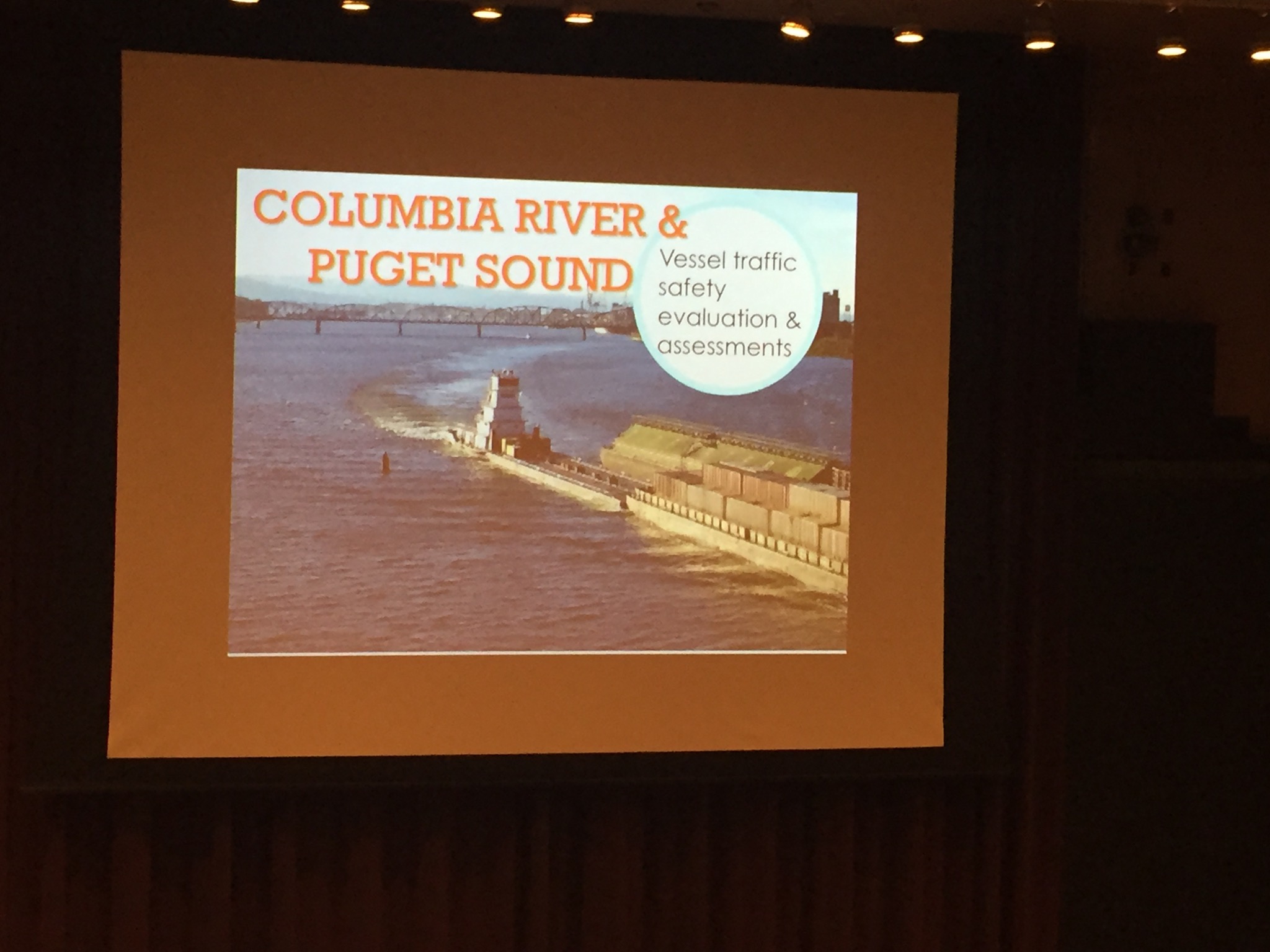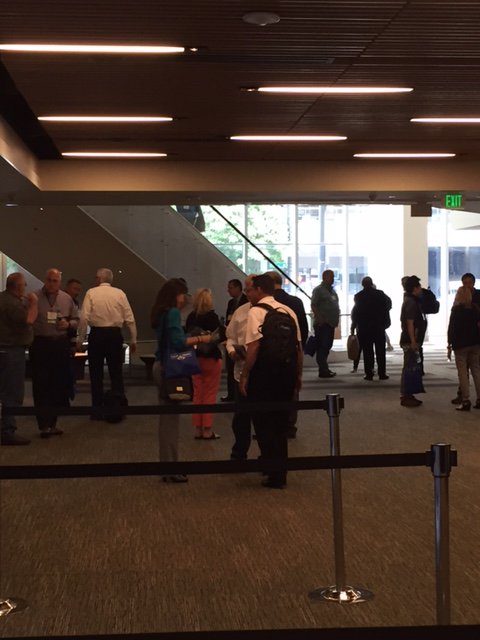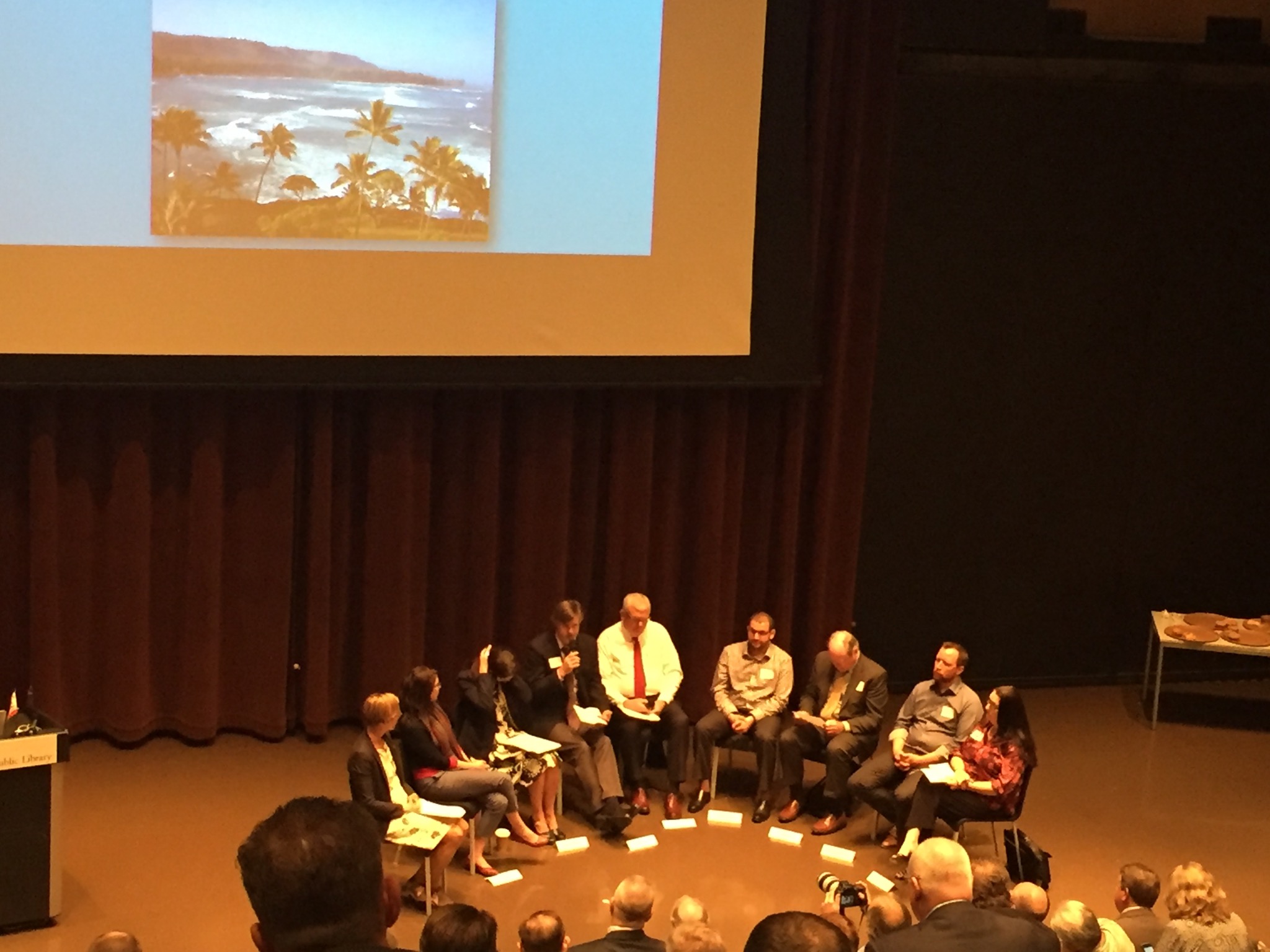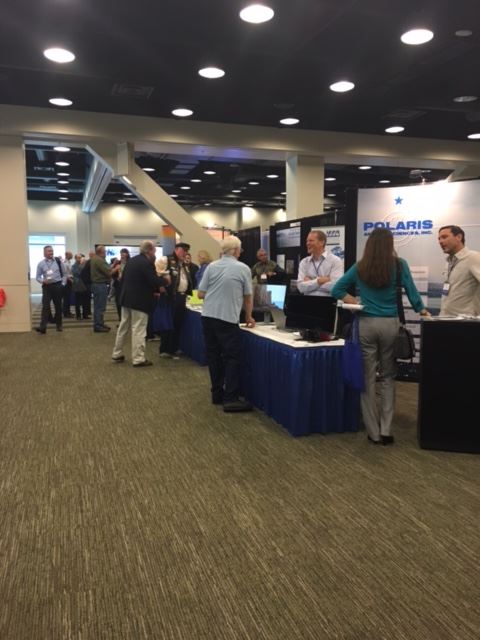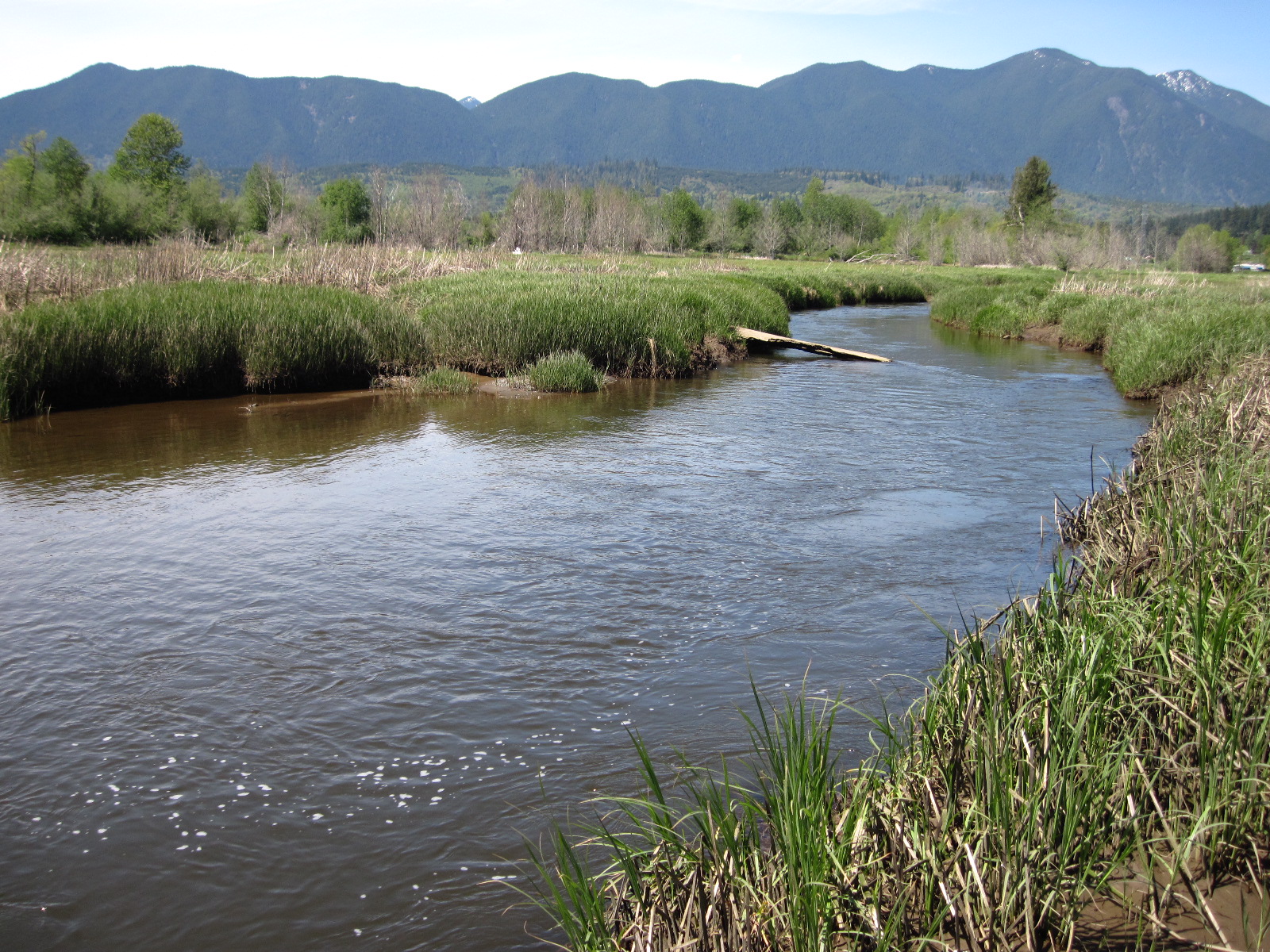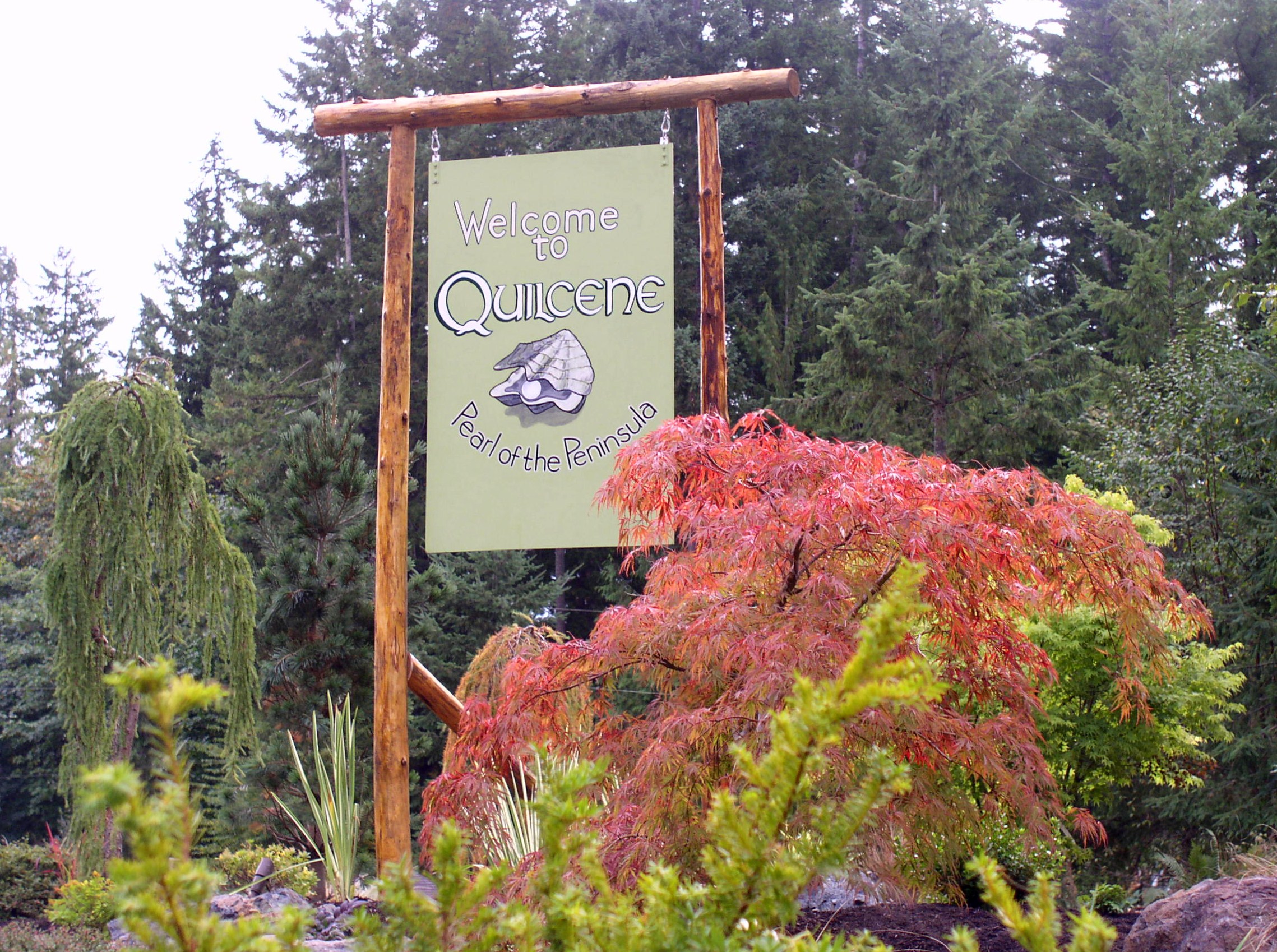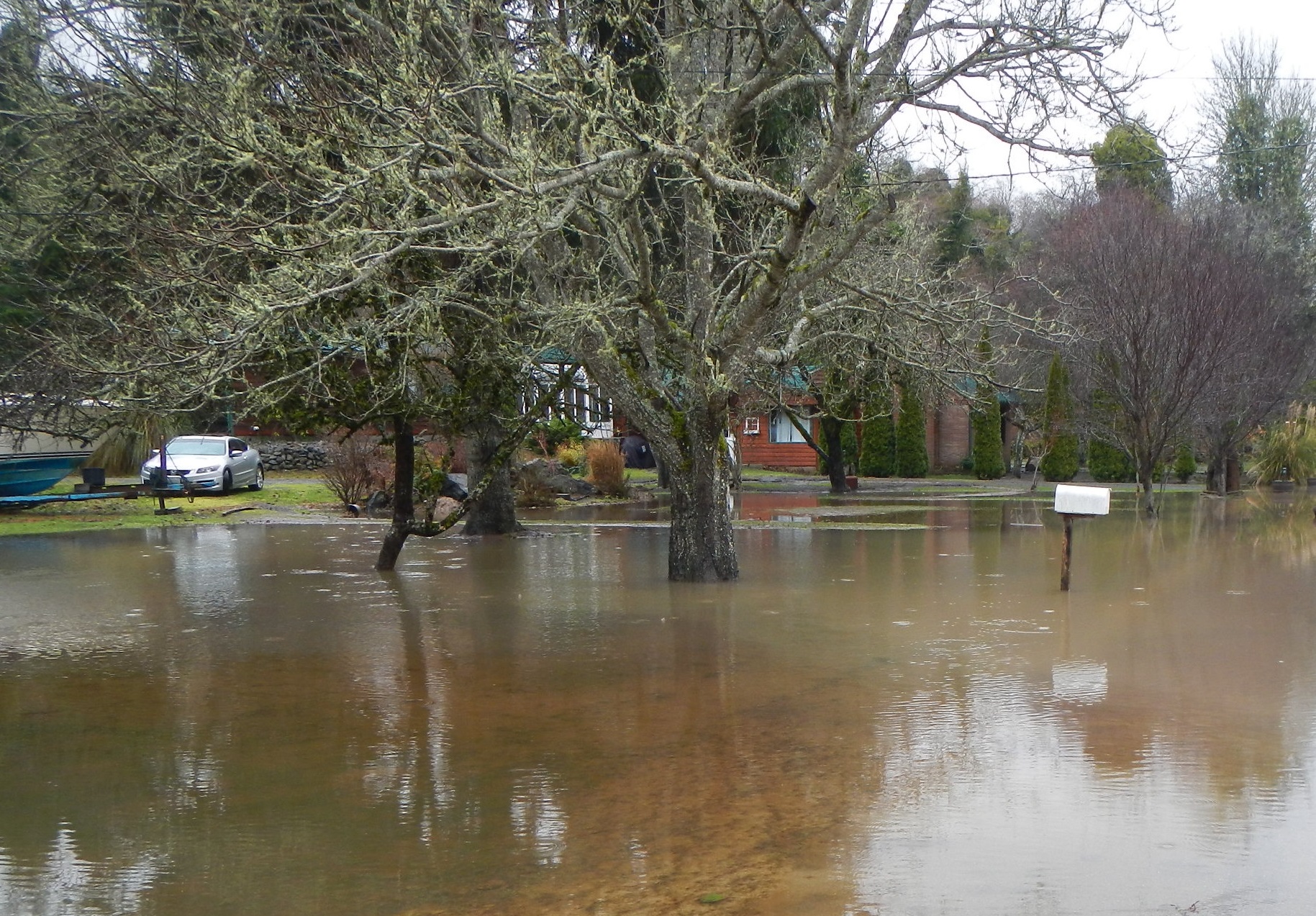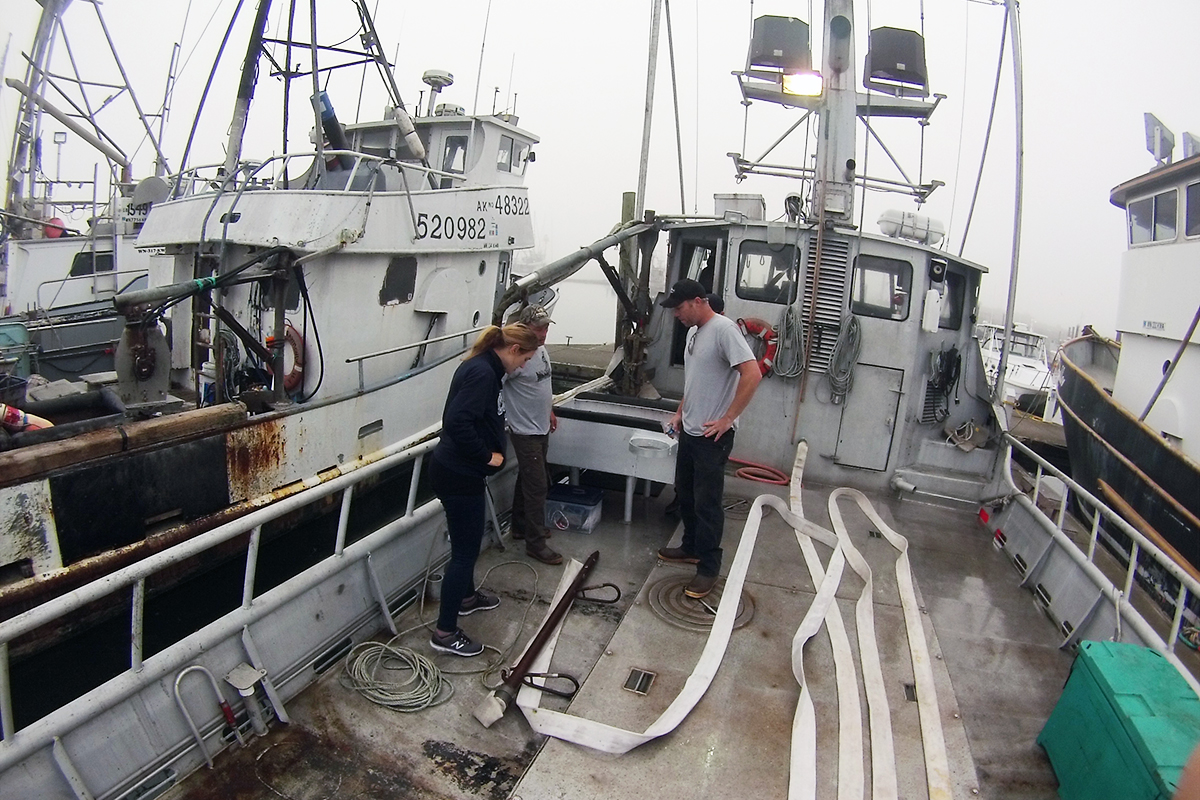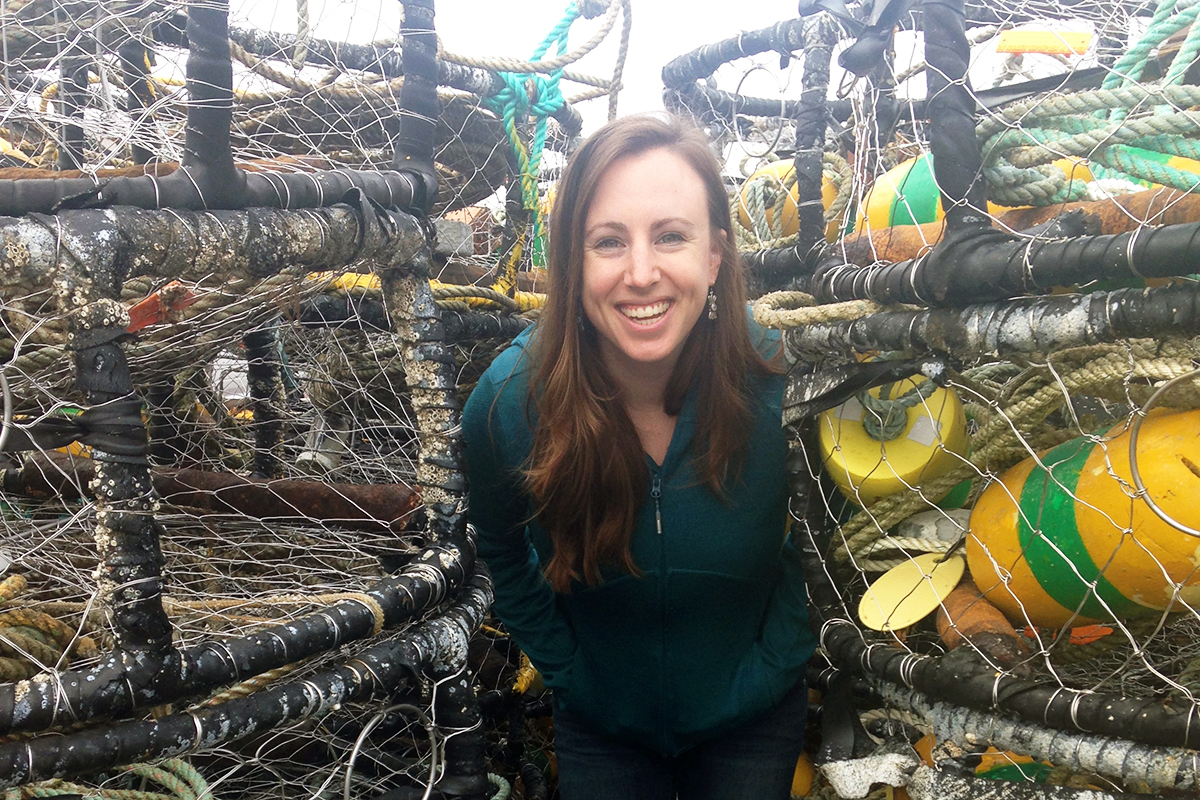A research trip to our Yellow Island preserve reveals the ongoing threat of sea star wasting disease.
Diving for Data in Nearshore Habitats
Diving Deep into Science at the Aquarium






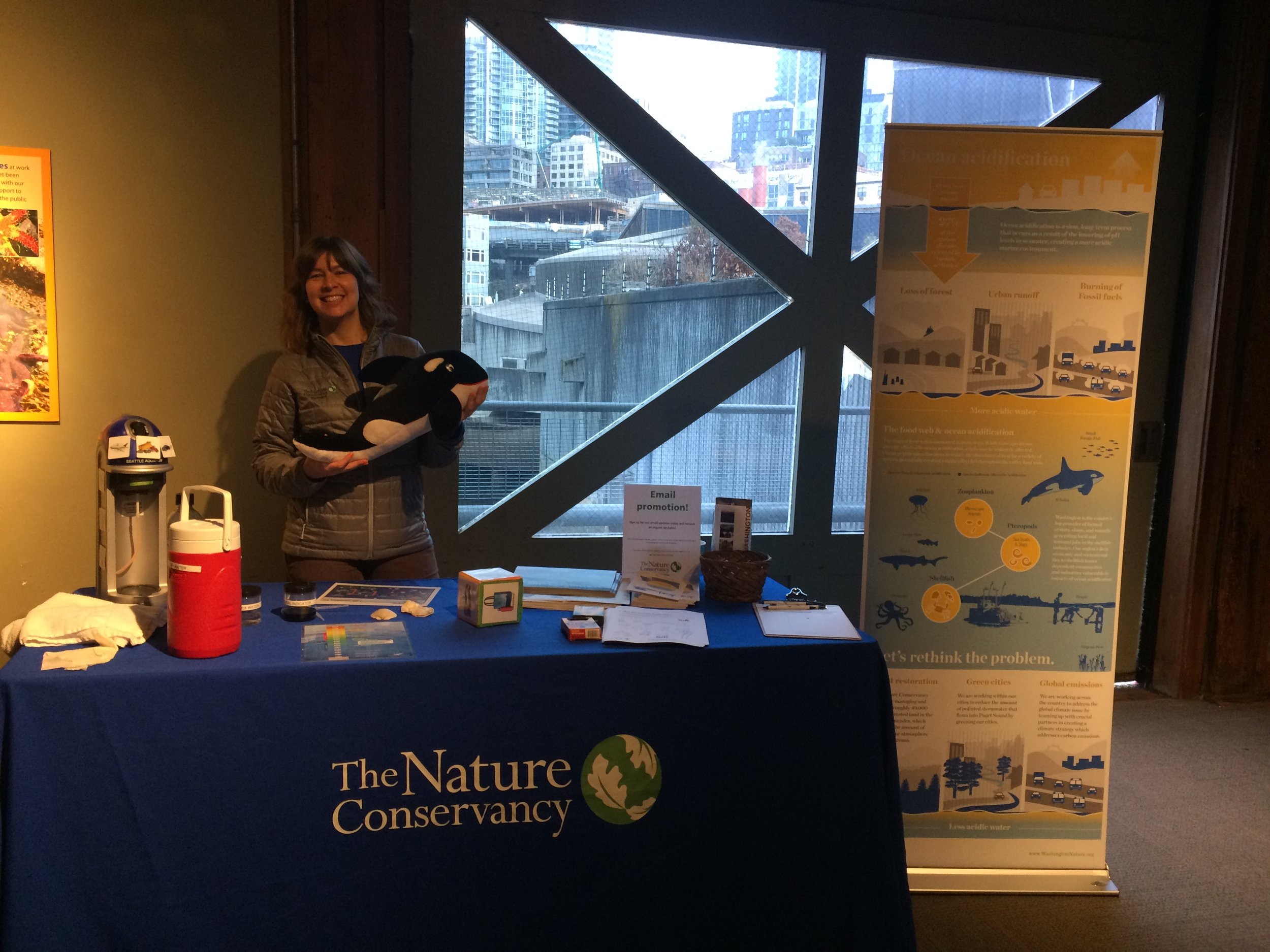

Written by Molly Bogeberg, Marine Conservation Coordinator
A few members of the TNC Team and some of our fabulous volunteers participated in three days of energetic children, ocean education, and science fun at Seattle Aquarium’s Discover Science Weekend. The weekend kicked off with an evening of Lightening Talks staring local scientists from National Oceanic and Atmospheric Administration, the University of Washington, Washington Department of Fish and Wildlife, and Vulcan Inc. Each scientist was given a mere 5 minutes to explain their research. This meant that the scientists had to be creative and quick to get their point across. It was a fun way to dabble in local research and mingle with other science nerds!
For the main Discover Science event, we had a booth to highlight our outreach materials on ocean acidification. Alongside the booth, our new ocean acidification infographic stood tall and provided talking points to help explain the complicated topic of ocean acidification, clearly. In addition to giving out our handy infographic booklets on ocean acidification to adults and coloring sheets to the little ones, we enticed kids to our table with a science experiment! Eager young scientists came with eyes bright and ready to learn.
For our experiment, we added CO2 to seawater using a Soda Streamer and then mixed in a pH indicator solution into normal seawater and the carbonated seawater to demonstrate how the chemistry of the water had been altered by CO2. With the addition of a green pH indicator, the color of the normal seawater retained the color of the pH indicator (green). The carbonated seawater, however, turned a bright orange after just a few drops of green pH indicator. We also used pH test strips to analyze the actual change in pH between the two samples. The changing color of the carbonated seawater elicited "ooos and ahhs" along with nods of understanding. You could really tell that the experiment and dialog helped the kids (and their parents) to grasp the concept of changing ocean conditions. After the experiment, we had kids roll a dice full of ways that they could help combat ocean acidification in their daily life. From civic action to walking to the farmer’s market to get groceries, the kids agreed that there were ways that they could help their favorite sea creatures!
Discover Science Weekend is my favorite outreach event that I get to participate in here at TNC. It really gives me hope to see kids excited about science and I love helping to inspire the next generation of ocean conservationists!
Learn more about our ocean work
Seattle’s (Unofficial) Oil Spill Preparedness Week
Written by Mike Chang, Makah Tribe/TNC Hershman Marine Policy Fellow
Photographs & Images provided by Mike Chang, Clean Pacific, Pacific States/BC Oil Spill Task Force
It’s not every week that you have a whole week dedicated to oil spill preparedness, response, and prevention. This past week, from June 20-25, Seattle was fortunate to host the 2016 Pacific States/British Columbia Oil Spill Task Force annual meeting and the 2016 Clean Pacific Conference.
The Nature Conservancy’s Oceans Team and the Makah Tribe’s Office of Marine Affairs have been actively engaged in influencing state and regional transboundary methods of oil spill prevention, preparedness, and response. Together, we have been working on improving the vessel traffic system in the Salish Sea to prevent oil spills affecting the Northwest’s precious marine resources. Last Tuesday, the Pacific States/B.C. Oil Spill Task Force brought state and provincial leaders, federal partners, industry leaders, and indigenous representatives from Hawaii, California, Oregon, Washington, Alaska, and British Columbia together to discuss regional updates and best achievable protection (BAP) against oil spills. Much of the day was focused on how to achieve BAP through existing policies, geographic response plans, and technological innovation. State and provincial leaders and industry leaders had frank discussions on how to invest in research and development to hopefully achieve innovative methods of improving oil transportation and preventing oil spills.
The Pacific States/B.C. Oil Spill Task Force segued into the Clean Pacific Conference, an annual meeting designed to bring stakeholders in spill prevention and response. This year’s conference brought governments, community leaders, and industries together to discuss lessons-learned from past spills, best practices in oil spill prevention and response, and a showcase of new products and solutions to keep the Pacific Ocean clean. Chad Bowechop, the director of the Makah Office of Marine Affairs and The Nature Conservancy’s key partner in oil spill prevention and response, participated in a panel discussion on local engagement for oil spill prevention and response. The key theme from the panel discussion was that communication and community engagement on oil spill prevention and response is crucial since each oil spill is unique and the response is tailored and influenced by the local community and their geographic response plan.
Overall, it was a productive week of engaging in discussions and identifying how our region can continually improve our oil spill prevention, preparedness, and response strategies.
LEARN MORE ABOUT OUR MARINE WORK
World Oceans Day Instagram Meetup
World Oceans Day was the perfect opportunity to get outside, enjoy nature and make a difference. We joined our local instagram community by celebrating our oceans and enjoying an amazing sunset along the Washington coast at Ruby Beach. Check out some scenes from the day in the video above!
Learn about our work along the coast and the science-based strategies that will help ensure healthy and productive oceans.
All About Orcas
Written by Zoe van Duivenbode, TNC Intern
Photo by Walt Kochan; Joel Rogers
June is officially Orca Month! These marine mammals are so magnificent they deserve a whole month filled with orca appreciation and fun educational events! Recently, orcas have been coined as the first non-human species whose evolution has been influenced by each group’s unique cultural differences, such as hunting methods and vocalization. While certain groups of orcas snack on sting-rays and squid, other groups, like the local Southern Resident Killer Whales exclusively feed on chinook salmon and other fish!
For the entire month of June, dedicated orca lovers and various organizations unite to help spread the word about the rapidly declining population of the Southern Resident Killer Whales. Between the years of 1995 to 2001, the Southern Resident Killer Whale population decreased by 20% and as of December 2015, our resident pods reached a total of 84. One of the most detrimental threats to our underwater neighbors involves the reduction of chinook salmon populations and their habitat. The Orca-Salmon Alliance, The Center for Whale Research, and the Orca Network are just a few organizations that are hosting educational events highlighting the important relationship between the Southern Resident Killer Whales, salmon and a healthy Puget Sound ecosystem over drinks, picnics, storytelling and music. Visit The Orca Month page to find all the fun events happening near you!
The Nature Conservancy is hard at work protecting both habitat and food supply for the Southern Resident Killer Whales. TNC’s efforts to decrease the amount of toxic stormwater runoff that drains into the Puget Sound will help create a cleaner home for all marine life, including orcas! Check out how TNC’s plans to solve stormwater issues in our cities to help increase our region’s salmon population, which in turn, increases our Southern Resident Killer Whale population!
READ MORE ABOUT OUR WASHINGTON WILDLIFE
Supporting Communities on the Big Quilcene
Written by Beth Geiger
The residents of Quilcene, Washington are used to living close to nature. Logging and shellfish production have long been the core of this small Olympic peninsula town’s economy.
But for some of those residents who live along the Big Quilcene River, flooding may seem a little too natural. At least once every year or two the river rises, swamping about 30 homes. “The flooding is getting more frequent,” says Tami Pokorny with Jefferson County Public Health. “The houses are moldy. People are tired of rescuing muddy kid’s toys from the yard.”
The Big Quilcene also floods sweetly-named Linger Longer Road, which crosses the river. Linger Longer Road is the only access to 70 homes as well as the town’s largest employer, Coast Seafoods Shellfish Hatchery. The hatchery is the world’s largest supplier of juvenile oysters. It operates 24 hours per day so when access is cut off, it’s high impact.
What’s more, the levees extend into the marshy tide flats in the Big Quilcene’s estuary. Removing them may alleviate flooding, but less predictability about where the river channel might go afterwards concerns shellfish producers, whose beds have been successfully cultivated and harvested with the dikes where they are. Meanwhile, habitat for chum salmon in the estuary is also of critical concern. Dikes cut off channels and water flow that link the bay and river and provide important habitat for juvenile salmon.
Community, business, nature: Is there one solution here for all?
An essential element of the lower Big Quilcene project is engaging community and other stakeholders. The Conservancy, in support of the project lead, Hood Canal Salmon Enhancement Group, and partner Jefferson County, is working closely with key stakeholders in the community to plan the project. Community input has been important in developing the project’s six goals (flood risk reduction, habitat restoration, compatibility with shellfish, educational opportunities, recreational access and economic vitality) and in developing three alternative project concepts. “The thing that stands out about this project is that it’s presenting ideas to the communities and saying “what do you want to do?” says Jared Keefer, Director of Environmental Health and Water Quality for Jefferson County.
The lower Big Quilcene project gives the Conservancy the opportunity to bring skills and knowledge to the table in a strategic, rather than a managing role. The Conservancy provides key support and knowledge to local project sponsors to advance community-supported, multi-benefit projects around Puget Sound. “This is a newer direction for the Conservancy,” says Jenny Baker, restoration manager for the Conservancy. “By playing more of a strategic role, we can have a bigger impact over a larger area.”
Hello, Fellow Fellows
Written by Melissa Watkinson (2015-16 TNC Hershman Fellow), Mike Chang (2015-16 Makah/TNC Hershman Fellow), and Kara Cardinal (Marine Projects Manager)
It’s no secret that The Nature Conservancy has many partners across Washington State and the Pacific Northwest. One partnership that has furthered The Conservancy’s efforts in marine and coastal work, and builds on the legacy of Washington’s leadership in the development of sound policies for the conservation and use of ocean and coastal resources is with Washington Sea Grant’s Marc Hershman Marine Policy Fellowship program. The program matches outstanding, highly motivated marine science, law and policy graduate students with agency, NGO and tribal host offices, offering each fellow first-hand experience in crafting policies and enabling fellows to share their academic expertise with state decision-makers. The program is named after Marc Hershman, a leader in the study of ocean and coastal policy for 30 years, who passed away in February 2008. Dr. Hershman served in several marine leadership capacities and played a key role in efforts to develop more comprehensive and coherent policies for Washington’s coasts. The facilitation and support of the Marc Hershman Marine Policy Fellowship program is an outstanding example of the commitment to education and outreach by Washington Sea Grant.
The opportunity to host a Hershman fellow has strengthened The Conservancy’s ability to achieve its goals to conserve marine habitats and support healthy and sustainable communities and, at the same time, educate and empower the next generation of environmental leaders. This year the fellowship program has brought in its fourth generation of Hershman fellows to The Conservancy. Each fellow has worked closely with the marine team to tackle projects addressing marine conservation and stewardship, and has continued to work with the Conservancy on a variety of different capacities even after their fellowship term.
Hershman Fellows at TNC have strengthened and developed an exciting breadth and depth of projects with the marine team. The Conservancy’s first Hershman fellow is our very own marine projects manager, Kara Cardinal, where she led TNC’s MSP outreach efforts throughout the Washington Coast and helped the state develop the MSP data viewer. Katie Wrubel was the second fellow at TNC and was instrumental in helping Washington Coast tribes begin their tribal marine planning efforts. Katie is now working with the Makah Tribe as their Natural Resource Policy Analyst. Molly Bogeberg, the third fellow at TNC, worked closely with coastal communities in Grays Harbor and Pacific counties to bring habitat conservation as a priority within their Shoreline Master Programs. Molly finished her fellowship last September and continued working with TNC as the temporary marine projects manager. Melissa Watkinson is the newest TNC Hershman Fellow and she is engaging with partners and stakeholders to improve project proposals and future socio-economic policy responses in relation to environmental restoration for the Washington Coast Restoration Initiative.
Starting in 2014, the partnership between the Conservancy and the Makah Tribe led to new Marine Policy Fellowship with the Makah Tribe in an effort to further joint efforts on vessel traffic safety and climate resilience. Laura Nelson, the first fellow with the Makah Tribe, worked out of Washington TNC’s Seattle office to collaborate between both entities and is currently working a marine policy contractor with the Makah Tribe. This year, Michael Chang is fulfilling this role with Makah and TNC. Laura and Michael led efforts with the Makah Tribe on issues of vessel traffic safety and oil spill preparedness, adaptation to climate change and ocean acidification and protecting treaty-rights at risk.
The Sea Grant College Program is celebrating its 50th year anniversary this year, and this month they are focused on highlighting all of their current and past sea grant fellows while also recruiting its next class of Hershman fellows. The partnership TNC has built with Washington Sea Grant and the Hershman Fellowship, and the relationships that four generations of fellows sustain, is a testament to the quality of people that TNC attracts, and is a wonderful example of the power of achieving success through strong partnerships.
LEARN MORE ABOUT OUR MARINE WORK
Vessel Traffic in the Salish Sea: Preparing for the Future
Written by Michael Chang
Story Map by Michael Chang (2015-2016 Hershman Marine Policy Fellow, Makah Tribe/The Nature Conservancy), Erica Simek Sloniker (GIS & Visual Communications), and Laura Nelson (2014-2015 Hershman Marine Policy Fellow, Makah Tribe/The Nature Conservancy)
The Salish Sea, a body of water between British Columbia and Washington State that includes the Strait of Georgia, the Strait of Juan de Fuca, and Puget Sound, is a region that supports the livelihoods of millions of people. Communities, tribes, and First Nations are intimately dependent on these waters for food, culture, recreation, and industry.
Every year, about 10,000 cargo ships carry hundreds of thousands of gallons of oil through the Salish Sea, creating a constant risk of oil spills in the region that could harm community and tribal livelihoods. However, an intricate network of experts from the Coast Guard, U.S. tribes, Canadian First Nations, state & federal agencies, regional non-profits, and local communities have prevented a major oil spill from occurring in over 20 years.
Recently, there have been several new proposals and developments for oil terminals that will increase the oil shipping volume by twofold. To ensure that the Salish Sea can adapt to the doubling of vessels and oil, the Makah Tribe and TNC have partnered together to organize a trans-boundary vessel safety summit in order to improve the U.S. and Canadian coordination for oil response, prevention, and preparedness.
The Nature Conservancy and Makah have created an interactive story map detailing the vessel safety system and what needs to be done to accommodate the expected increase in vessel traffic.
See the full, interactive story map on vessel traffic on oil spill preparedness and response in the Salish Sea region.
Searching for Crab Pots
Abandoned fishing gear never stops fishing.
Written and Photographed by Molly Bogeberg, Hershman Marine Policy Fellow and Kara Cardinal, Marine Projects Manager
Kara Cardinal and I woke up early to walk the docks in Westport and catch Quinault Indian Nation fisherman (Tony) and Natural Resource Consultants (NRC) staff (Jeff Cox) before they left Westport in search of lost and abandoned crab pots to pluck from the seafloor. The Nature Conservancy has partnered with the Quinault, NRC, and NOAA to use a specially designed line cutter and hydraulic pump to remove crab pots that have been buried deep in the sand or caught in-between rocks.
Jeff demonstrated how the specially designed crab pot line cutters work. It was amazing to see how the white tubing pumps water into the sandy seafloor to help remove buried crab pots. These derelict crab pots are a menace because they can continue to catch crab, impede other fishing practices, and entangle marine mammals. The hope is that by removing these lost pots, the waters close to Westport and the Quinault Nation will be safer for boaters and marine organisms alike.
Learn more about our marine work here.













